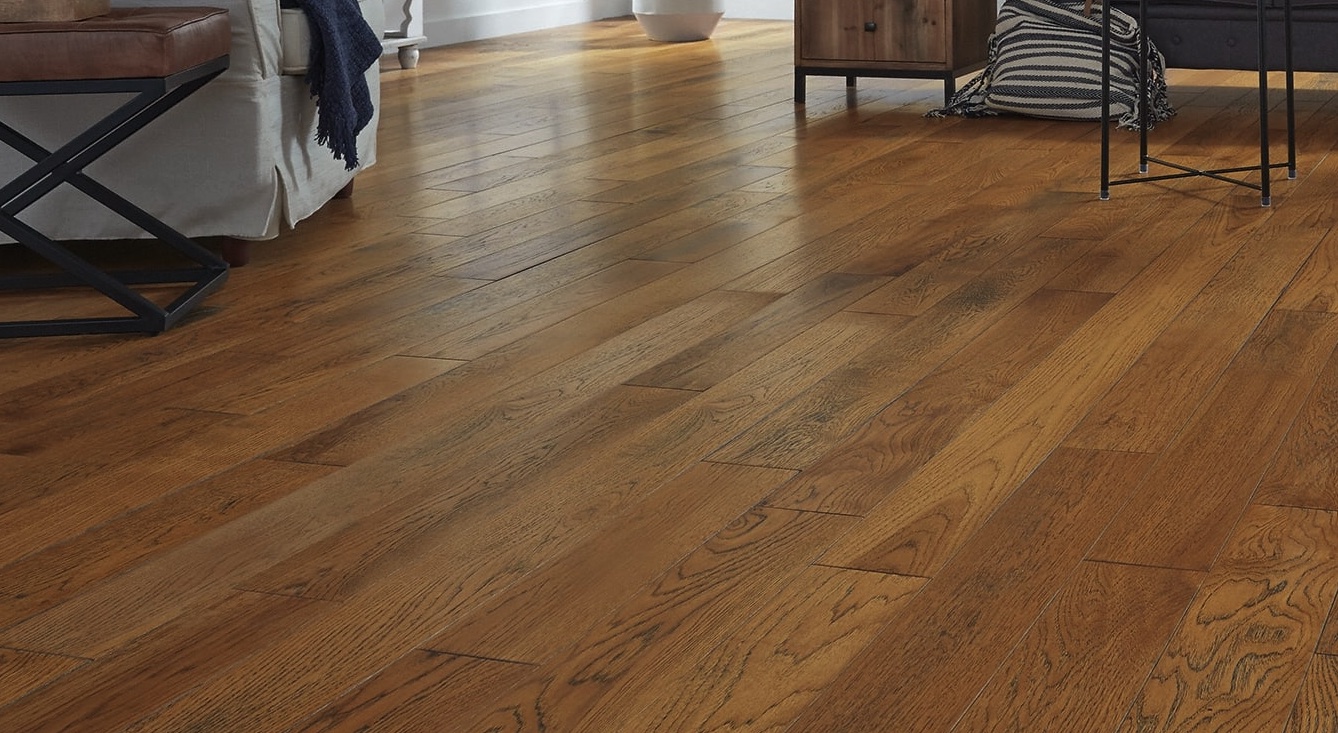Have you ever felt the urge to deep clean your floors, but the thought of harsh chemicals and scrubbing left you hesitant? You’re not alone. Many homeowners are choosing steam cleaning as a more natural and effective way to tackle dirt and grime. But what about engineered wood floors? Can you use a steamer on them without causing damage? This question has puzzled many, and we’re here to shed light on the truth, offering helpful tips to ensure your floors stay beautiful for years to come.

Image: www.theindoorhaven.com
Engineered wood floors have become increasingly popular due to their affordability, durability, and aesthetic appeal. They mimic the elegance of solid hardwood while offering greater stability and resistance to warping. However, their unique construction raises concerns about the impact of steam cleaning. Let’s delve into the world of engineered wood flooring and discover whether steam cleaning is a friend or foe.
Understanding Engineered Wood Floors
Before we jump into the specifics of using a steamer, it’s crucial to understand what makes engineered wood floors different from solid hardwood. Engineered wood flooring consists of multiple layers, with a thin veneer of real hardwood on top, adhered to a core of plywood or other engineered materials. This construction provides greater stability and moisture resistance than solid hardwood, making it a suitable choice for various climates and environments.
The Concerns with Steam Cleaning on Engineered Wood Floors
Here’s where the dilemma arises. While engineered wood is more resistant to moisture than solid hardwood, it’s not entirely immune. Exposing the wood to excessive heat and moisture can potentially lead to several issues:
- Warpage: The core layers of plywood or engineered material can expand and contract with changes in moisture levels. Excessive steam exposure can cause these layers to warp, affecting the overall integrity and appearance of the floor.
- Delamination: The adhesive bonding the veneer to the core can weaken with prolonged exposure to heat and moisture. This can lead to delamination, separating the veneer from the core, resulting in unsightly gaps and damage to the flooring.
- Damage to Finishes: Engineered wood floors often receive protective finishes like polyurethane or wax. Steam can soften these finishes, making them susceptible to scratches and making the floor dull over time.
Can You Use a Steamer on Engineered Wood Floors? A Cautious Yes!
While the potential risks are real, the good news is that you can still use a steamer on engineered wood floors, but with caution. The key lies in avoiding excessive exposure to heat and moisture. Here’s how to steam clean your engineered wood floors safely:
- Check the Manufacturer’s Recommendations: Always consult your flooring manufacturer’s instructions before attempting any cleaning method. They may have specific recommendations for cleaning engineered wood floors.
- Use a Low-Temperature Setting: Avoid using high-heat settings on your steamer. Opt for a low or medium setting to minimize the risk of damaging the wood.
- Keep the Steamer Moving: Avoid dwelling in one spot for too long. Keep the steamer moving to prevent excessive moisture buildup and ensure even cleaning.
- Test in an Unconspicuous Area: Before proceeding with the entire floor, test the steamer in an inconspicuous area like a closet or under a piece of furniture. This will allow you to assess the reaction of your particular flooring to the steam.
- Dry Thoroughly: After steaming, ensure the floors are completely dry. Use a clean, dry cloth or mop to remove any excess moisture. Fans or dehumidifiers can also help speed up the drying process.

Image: favoredstoneguides.com
Alternative Cleaning Methods for Engineered Wood Floors
If you’re unsure or apprehensive about using a steamer on your engineered wood floors, several other cleaning methods can effectively remove dirt and grime while maintaining the integrity of your flooring.
- Vacuuming: Regular vacuuming with a brush attachment helps remove dust, debris, and pet hair, keeping your floors clean and free from scratching.
- Sweeping: Sweeping with a broom and dustpan removes dust and larger particles, especially in areas where vacuuming is not suitable.
- Mop with a Cleaning Solution: Wet mopping with a mild cleaning solution formulated for wood floors is an effective way to remove dirt and stains without over-wetting the wood.
- Professional Cleaning: If you prefer a professional touch, consider hiring a reputable cleaning service specializing in wood floor care. They can utilize specialized cleaning techniques and equipment to ensure optimal results without damaging your floors.
Tips for Maintaining Engineered Wood Floors
Beyond steam cleaning, regular maintenance plays a crucial role in preserving the beauty and longevity of your engineered wood floors. Here are some essential tips for keeping your floors looking their best:
- Place Floor Mats: Use mats at entrances to trap dirt and debris, preventing them from being tracked onto your floors.
- Avoid Scuff Marks: Protect your floors from scuff marks by using furniture pads or felt protectors for heavy furniture.
- Protect from Moisture: Prevent water spills from causing damage by cleaning them up promptly, and avoid placing spills directly on wood floors.
- Regular Dusting and Cleaning: Regular dusting and cleaning prevent dust and dirt buildup, which can scratch and dull the finish over time.
- Avoid Harsh Chemicals: Avoid using harsh chemicals or abrasive cleaners that can damage the finish of your engineered wood floors.
Can You Use A Steamer On Engineered Wood Floors
Conclusion
Steam cleaning can be an effective way to deep clean your floors, but it requires a considerate approach when it comes to engineered wood floors. By following the tips and guidelines discussed above, you can safely and effectively use a steamer while preserving the beauty and longevity of your engineered wood floors. Remember, always consult your manufacturer’s instructions and prioritize proper care and maintenance for a truly lasting, beautiful floor covering.






